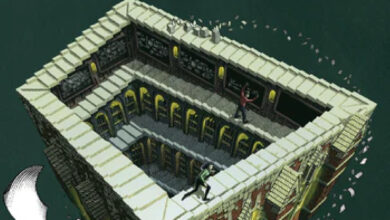Book Review: ‘The Fate of the Day,’ by Rick Atkinson

Just as enjoyable are Atkinson’s portraits of lesser-known figures, such as the “luminous and self-possessed” Baroness Frederika Riedesel, the wife of a commander of Hessian forces, who travels to America with three daughters under the age of 5. She rises to the challenges of war, cheering British troops, butchering pigs and dodging rattlesnakes, and befriending Thomas Jefferson, who sells her a piano so she can sing arias while confined to a cabin in Virginia by the Continental Army. Atkinson, who has a fine sense of humor — and irony — notes that two months after being released on parole by Congress, this Prussian-born supporter of the Tories gave birth to a fourth daughter whom she named “America.”
To label this book military history, or even American history, does it a disservice. While battles are described with enough detail to please fans of the genre (and enough skill to make both strategy and tactics legible for those who are not), Atkinson’s canvas is vast. Once the French enter the war in 1778, the American Revolution becomes a world conflict, involving Europe, India and the Caribbean. Atkinson covers the fallout from the battle for St. Lucia, where 1,500 French soldiers lost their lives, with as much care as the British capture of Savannah.
Just as impressive is his attention to minutiae: the danger of using green timber in ship building; the obstacles of finding housing in a city that’s burned to the ground; divisions within individual families over politics; and the intense suffering caused by hunger, exposure and disease on troops, displaced citizens and horses (his command of the equine world is prodigious).
Recognizing that the people of the 18th century had an intimate relationship with nature, Atkinson grounds his account in the weather, flora, fauna, tides, crops and night skies that provided meaning in their lives: “Woolly bear caterpillars” displaying “wide black rings” are harbingers of a harsh winter in New Jersey; stars above the Thames River “wheeled in their courses,” while “fields of maize, rye and flax” lie abandoned mid-harvest near the Green Mountains of Vermont.
Descriptions of events include sounds and smells as well as appearances. Where the Chesapeake Bay was wide, Atkinson writes, “the land could be smelled in loamy whiffs but not seen. Swans and sea eagles circled” the British fleet “and blue crabs swarmed by the many thousands near the surface.” “The Fate of the Day” evokes dozens of battles, almost none of which marked a conclusive shift in the fortunes of Britain or the patriots, but Atkinson’s ability to work at this level of detail keeps his depictions fresh. This is great history.
THE FATE OF THE DAY: The War for America, Fort Ticonderoga to Charleston, 1777-1780 | By Rick Atkinson | Crown | 854 pp. | $42
Source link




